Wrexham, Wales, UK 作者: 来源: 发布时间:2021-09-17
I. Population and Area
Continent: Europe
Country: The U.K
State/Province: Wales
City/Town: Wrexham
Total Area: 4.544 (sq mi)
Population in 2011: 65.69 (thousand)
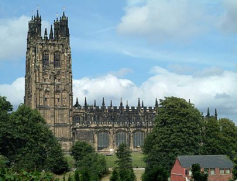
II. Natural Geography (environment and resources)
Geography
Wrexham is not built on a major river, but on a relatively flat plateau between the lower Dee Valley and easternmost mountains of north-east Wales. This position enabled it to grow as a market town, as a crossroads between England and Wales, and later as an industrial hub – due to its rich natural reserves of iron ore and coal. But three small rivers flow through parts of the town: the Clywedog, Gwenfro and Alyn. Wrexham is also famed for the quality of its underground water reserves, which gave rise to its previous dominance as a major brewing centre.
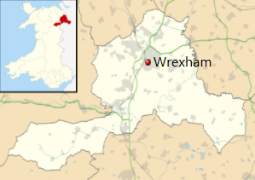
Originally a market town with surrounding urban villages, Wrexham has now coalesced with a number of urban villages and forms North Wales' largest conurbation, including its western and south western suburban villages. The conurbation including Wrexham, Rhosllannerchrugog, Coedpoeth and Llay built-up areas totals over 100,000 residents. The Office for National Statistics defines a Wrexham Built-Up Area (Pop. 65,592 in 2011) making it the 134th largest built up area in the UK, and the 4th largest in Wales. Wrexham is home to approximately 40% of the total population of the county borough.
Wrexham is approximately 13 miles (21 km) south of Chester, 30 miles (50 km) north-west of Shrewsbury, 50 miles (80 km) south-west of Manchester, and 140 miles (230 km) north of Cardiff.
III. Economy
In recent years, Cardiff, the northern and southern coastal belts and some rural parts of Wales have experienced the biggest increase in employment, while the South Wales Valleys and other industrial towns have suffered a decline. This pattern probably reflects a combination of
·the increasing importance of quality of life factors in location decisions;
·the greater role played by the largest conurbations as centres of service sector businesses and
·the effects of skill-biased technical change on the demand for labour, disadvantaging "skills poor" declining industrial districts.
Average earnings and employment vary considerably across Wales. They are both generally higher in east Wales, especially in urban areas, but lower in south west Wales and the Valleys, although earnings in Bridgend and Neath Port Talbot, which are still centres of skilled manufacturing employment, are relatively high. In north and north west Wales, earnings are low but the employment rates are above the Welsh average.
A significant part of the earnings (and value added per job) variations within Wales are due to structural factors such as economic mass and occupational mix rather than like-for-like lower pay or productivity.Cardiff, with over 400,000 people, benefits from its size, capital status, a hinterland in south east Wales and good connections to London and the M4 corridor. Cardiff is the primary location for service sector activities in Wales, with 26% of Welsh service sector output and 22% of Welsh service sector employment, compared to 19% of all employment in Wales.North east Wales benefits from proximity to Cheshire, Greater Manchester and Merseyside and there is significant cross-border commuting. The Valleys and the western areas of Wales have less economic mass and are more distant from major economic centres. These are some of the poorest regions in Europe and qualify for Objective One funding.
Regions (NUTS3) | GDP € (2013) | GDP per capita € (2013) | GDP € (2016) | GDP per capita € (2016) |
Gwent Valleys | € 5.962 bn | €17,500 | € 6.923 bn | €20,200 |
Bridgend & Neath Port Talbot | € 6.016 bn | €21,500 | € 7.240 bn | €25,400 |
Swansea | € 5.532 bn | €23,100 | € 6.332 bn | €25,800 |
Monmouthshire & Newport | € 6.322 bn | €26,500 | € 7.260 bn | €30,000 |
Cardiff & Vale of Glamorgan | € 14.361 bn | €30,000 | € 16.590 bn | €33,900 |
Flintshire & Wrexham | € 8.346 bn | €28,800 | € 9.374 bn | €32,200 |
Powys | € 2.869 bn | €21,600 | € 3.134 bn | €23,700 |
TOTAL | € 71.396 bn | €23,200 | €81.683 bn | €26,200 |
Finance and professional services
Wrexham is home to DTCC, which collates and analyses company information for investment banks and financial organisations.
Moneypenny is the UK's largest outsourced switchboard and personal assistant service. Following expansion to the US and New Zealand, they built a new global headquarters at the Western Gateway site at a cost of £15 million including a treehouse meeting room, its own village pub and a sun terrace.
The Development Bank of Wales signed a lease for its new headquarters in Wrexham based on the Wrexham Technology Park, which is expected to accommodate 50 jobs.
Chetwood Financial is a fintech lender that acquired a full banking licence in 2018, the only new retail bank to secure a licence in 2018.
IV. Industrial Characterisitics
Major industries:
Wrexham Industrial Estate is one of the largest industrial areas in Europe and is home to over 340 businesses creating employment for over 10,000 people. The estate currently extends to over 550 hectares and is home to major manufacturing businesses in a range of sectors including automotive, aerospace, food, pharmaceutical and engineering.
Wrexham Industrial Estate is home to a number of biopharmaceutical companies such as Wockhardt and Ipsen which have major sites which provide research and development and manufacturing capabilities. The Industrial estate also hosts a 2,100 capacity Category C male prison, costing £212 million, which was built on the former Firestone Site. The prison opened in March 2017, and was named in February 2016 as HM Prison Berwyn.
Wrexham's close location to both aerospace (Airbus are located in nearby Broughton) and automotive manufacturers have led to a number of organisations being in the town. JCB on the Wrexham Industrial Estate, ACT and Magellan Aerospace are all major employers in the area.
Large food manufacturing sites include Kelloggs, Cadbury, Rowan Foods and Village Bakery. Electronics companies Sharp and Brother have manufacturing facilities located along the A483.
One of Wrexham's traditional industries is brewing. Wrexham was once home to Marstons, Border Breweries and Wrexham Lager. Wrexham is still a brewing town, however, on a smaller scale, many are either located on Wrexham Industrial Estate and in the town centre, this includes Big Hand, Magic Dragon, Erddig, Sandstone, Axiom and the revival of Wrexham Lager Beer.
Major projects and related introductions:
North Wales Hospital, Denbigh
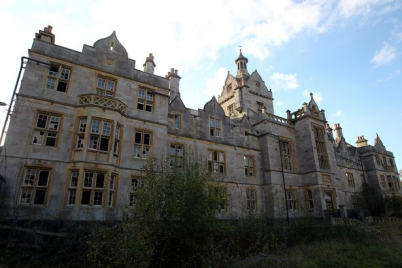
Now Ruthin based developer Jones Bros has launched consultation on their £30m+ scheme to provide 300 new homes which they say will provide a £75 million boost to the local economy.
Planning is set to be submitted and the company has already begun work on a new, purpose-built training centre on the Hospital site.
If planning is secured it is hoped that work will step up over 2020 and with the full scheme to take up to a decade this can provide a long term boost to the economy of Denbighshire and the wider North Wales.
Reference Website:
https://www.business-live.co.uk/economic-development/six-major-projects-could-boost-17490854
V. Attractions
1. Wrexham Waterworld:
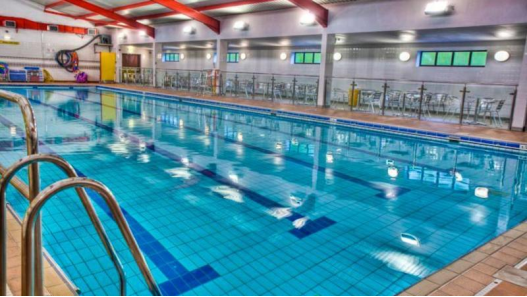
Swimming is not only great exercise; it’s good for wellbeing and improves sleep, which will be welcome news for parents everywhere! So get the kids down to Wrexham Waterworld!
There’s a lot on offer, including the 25m six-lane competition pool for events and ‘serious swimmers’. Get your laps in and perfect your stroke with the help of the friendly, helpful poolside staff. For families with younger children there’s the learner pool, where little ones can build confidence and enjoy being in the water in a safe environment.
For those that are competent swimmers the 65m slide should keep them entertained, which gives parents the ideal opportunity to relax in the bubble pool, Jacuzzi, sauna or steam room. Finally there’s a rapids river ride if you’re feeling adventurous!
Swim away your stresses!
2. Tenpin Wrexham:

Come and knock ‘em down at Tenpin Wrexham, and discover a bowling alley that keeps the party atmosphere going all week long!
Challenge your littluns to a few rounds of American pool and table tennis, or let them marvel at the NAMCO Arcade game centre where they can play countless games against their friends. The main event though has to be Cosmic Bowling which is all about UV lights, neon pins and disco tunes.
When your mini-bowlers get hungry you can all grab a bite to eat from their Lanes’ menu, and don’t worry, there is plenty to suit tiny taste buds as well as the grown-ups! This is a great way for the family to enjoy a day out, indoors, while avoiding those pesky Welsh winds!
3. ODEON Wrexham Eagles Meadow:
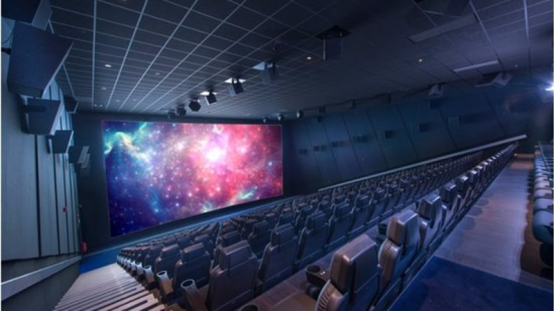
A trip to the cinema could take you from the deepest parts of the jungle right up into outer space. Explore a world without limits at ODEON Wrexham Eagles Meadow. With 8 screens of multimedia movie magic for the family to enjoy, you can't go far wrong.
Sharing your favourite films with family is special, so bring the whole gang to an Odeon Kids screening. Carefully selected family favourites are shown every Saturday and Sunday over the school holidays and are an easy way to spend a rainy afternoon.
Reference Website:
https://www.dayoutwiththekids.co.uk/things-to-do/north-wales/flintshire-and-wrexham/wrexham
VI. History
Early history
Human activity in the Wrexham area dates back to the Mesolithic period (8000 to 4300 BC),with tools made from flint being found to the east of the town. Two Bronze Age burial mounds are located to the west of the modern town centre and there is evidence that the area had developed into a centre for an innovative metalworking industry by the early Middle Bronze Age. A series of Iron Age hill-forts are located to the west of present-day Wrexham along the upland-lowland line suggesting the presence of an ancient tribal boundary.
At the time of the Roman conquest of Britain, the area which Wrexham formed part of was held by a tribe called the Cornovii. A Roman civilian settlement was located in the Plas Coch area of Wrexham and excavations have revealed evidence of agriculture and trade with the wider Roman world. Following the end of Roman rule in Britain, Wrexham formed part of the Romano-British Kingdom of Powys.
Medieval
The Battle of Chester circa 615/616 marked the beginning of a long struggle between the Welsh and English for territory in this part of Wales. During the 8th century, the Anglo-Saxon royal house of Mercia pushed their frontiers westwards and established the earth boundaries of Wat's Dyke and Offa's Dyke to the west of the present town.
During this first period of Mercian advance in the 8th century, the settlement of Wrexham was likely founded on the flat ground above the meadows of the River Gwenfro. The name Wrexham probably comes from the old English for Wryhtel's river meadow. Alternatively, the name may have described a settlement of the Wreocensæte people, who were possibly a continuation of the Cornovii tribe of Roman Britain. The settlement may have originally been named 'Caer Fantell' in Welsh but by the 13th century was recorded in Welsh as 'Gwrexham' or 'Gregsam'.
The Mercians fought over north-east Wales during the 8th to 10th centuries but the Welsh re-conquered the Wrexham area during the 11th century. Following the Welsh reconquest, Wrexham formed an integral part of the Powys lordship of Maelor and so does not appear in the Domesday Book of 1086. The first recorded reference to the town in 1161 is to a castle at 'Wristlesham'.
Stability under the princes of Powys Fadog enabled Wrexham to develop as a trading town and administrative centre of one of the two commotes making up the Lordship. In 1202, Madoc ap Gruffydd Maelor, Lord of Dinas Brân, granted some of his demesne lands in ‘Wrechcessham’ to the abbey of Valle Crucis and in 1220 the earliest reference to a church in Wrexham is made.
Early Modern
The Acts of Union passed during the reign of Henry VIII brought the lordship into the full system of English administration and law. It became part of the new shire of Denbighshire in 1536.
In 1584 St Richard Gwyn, a local teacher, was imprisoned in the town before being taken to near the Beast Market and hung, drawn and quartered for his faith, becoming the first Welsh martyr to the Papist cause.
The main body of the church of St Giles was rebuilt in the late 15th and early 16th centuries to become one of the finest examples of ecclesiastical architecture in Wales.
The economic character remained predominantly as an agricultural market town into the 17th century but there were workshops of weavers, smiths, nailers as well as dye houses. The 1620 Norden's jury of survey of Wrexham Regis stated that four-fifths of the land-holding classes of Wrexham bore Welsh names and every field except one within the manor bore a Welsh or semi-Welsh name.
A grammar school was established in 1603 by Alderman Valentine Broughton of Chester.
During the English Civil War, most local Welsh gentry supported Charles I and in 1642 the King addressed enthusiastic crowds in the town. However, local landowner Sir Thomas Myddelton declared for Parliament and Parliamentarians occupied the town in 1643 and 1645. Wrexham served as military headquarters for both forces and a quarter of houses were burned down in 1643 during the quartering of troops in the town.
Late Modern
Wrexham was known for its leather industry and by the 18th century there were a number of skinners and tanners in the town.
The Industrial Revolution began in Wrexham in 1762 when the entrepreneur John Wilkinson (1728–1808), known as "Iron Mad Wilkinson", opened Bersham Ironworks. Wilkinson's steam engines enabled a peak of production at Minera Lead Mines on the outskirts of Wrexham.
From the late 18th century numerous large-scale industrialised collieries operated in the southern section of the North East Wales coalfield, alongside hundreds of more traditional small-scale pits belonging to a mining tradition dating back to the Middle Ages.
Wrexham's former police station on Regent Street, originally the barracks for the Royal Denbighshire Militia, is now home to Wrexham County Borough Museum. The museum has two galleries devoted to the history of the town and its surrounding communities. The museum also holds the archive of the Royal Welch Fusiliers; battalions were stationed in Wrexham during the First World War. The collection is notable for containing original documents in the handwriting of Siegfried Sassoon, Robert Graves, J. C. Dunn and other notable members of the RWF, as well as official records.
VII. Culture
Performing arts
A company of actors (anterliwtwyr) from Wrexham is recorded as appearing in Shrewsbury in Henry VIII's reign.
The town is referenced in the late-Jacobean Beaumont and Fletcher play, ‘The pilgrim’ (1647), in which the stock Welshman declares that “Pendragon was a shentleman, marg you, Sir, and the organs at Rixum were made by relevations”.
Wrexham hosted the National Eisteddfod in 1888, 1912, 1933 and 1977, as well as an unofficial National Eisteddfod event in 1876. The National Eisteddfod returned to the area in 2011, when Wales' leading festival was held on the land of Lower Berse Farm between 30 July and 6 August.
Wrexham has a number of theatres, including the Grove Park Theatre on Vicarage Hill and the Yale Studio theatre close to Llwyn Isaf, with others at Glyndŵr University on Mold Road and at Coleg Cambria. There is a multi-screen Odeon cinema in the Eagles Meadow development.
Visual arts
Tŷ Pawb (formally Oriel Wrecsam and the People's Market) is Wrexham's largest facility for visual arts and exhibitions, and offers other resources including an indoor market, food court and performance spaces. Tŷ Pawb is Welsh for "Everybody's House" and the name was selected by public vote in 2017. Tŷ Pawb was the lead organisation for Wales in the Venice Biennale 2019.
Other galleries in Wrexham include Undegun Arts Space on Regent Street and The Wrexham Independent Gallery (TWIG) on Lord Street.
Wrexham's School of Creative Arts (part of Wrexham Glyndŵr University and formally known as North Wales School of Art and Design or NWSAD) is based on Regent Street.
Music
Live music venues have developed around the core of the town. Further out of the centre other venues provide live music shows. The scene is dominated by local bands and the town has become known for the rock, indie and alternative genre.
Central Station opened in 1999, the venue had a capacity of approximately 650, attracting a number of international acts. Shortly after its rebrand to Live Rooms Wrexham, it was found to be under financial pressures and closed on 9 February 2019, the year that marked its 20th anniversary.
William Aston Hall at Glyndŵr University is a 900-seat venue designed to accommodate a range of events from conferences and exhibitions to theatrical performances, comedy shows and pop/rock concerts. Acts who have performed there include Super Furry Animals, Feeder, Love, Ray Davies, Freddie Starr and Sweet. The Wrexham Symphony Orchestra has been the orchestra in residence at William Aston Hall since 2004.
In 2016 the Racecourse Ground re-introduced live music to its summer schedule, the Welsh band Stereophonics were the first musicians to play a live show since the festival with Motörhead in 1982. After the success of Stereophonics with special guests Catfish and the Bottlemen came 2017 with live music from UB 40 and Olly Murs. In June 2018 the Stereophonics returned to the Racecourse Ground alongside special guest Jake Bugg. In June 2021, Lionel Richie and Jess Glynne will be headlining shows at the Racecourse Ground
FOCUS Wales is a festival that began in 2010 to showcase musicians from Wales and around the world using venues across the town. FOCUS Wales includes interactive sessions and celebrates the arts of the region and beyond.
Media
Wrexham's newspapers include two daily titles, Reach PLC's Daily Post (North Wales) run from Colwyn Bay, and Newsquest's The Leader (formerly Wrexham Evening Leader) run from Mold with a circulation of just 3,825 for the Wrexham edition.
There are three radio stations broadcast in the Wrexham area – Communicorp station Heart FM and Global Radio station Capital North West and Wales broadcast from the studios based in Gwersyllt and community radio station Calon FM serving the county borough from studios at Glyndŵr University on Mold Road. Whilst BBC Cymru Wales runs a studio and newsroom for their radio, television and online services located at Glyndŵr University but does not base broadcasting there with no specific local output.
An online news website covering the Wrexham area, Wrexham.com, operates from offices in Regent Street in the town centre since 2012.
VIII. Other information
Redevelopment has started on Coleg Cambria's Yale site, with a cost of £20 million; the site is scheduled to be open for the 2020–21 academic year.
Wrexham Council say they plan to carry out widespread works in the town centre over the next few years. There have been works carried out to Regent Street, Hope Street, Queen's Square, and Wrexham Bus Station, involving introduction of amenities and resurfacing.
A new tourist information centre including a shop selling local produce, a cafe and event space will be opening in Autumn 2020.
Henblas Street, the site of the Techniquest re-location is currently re-developing a disused shopping area into a multi-purpose site including Sports Direct, eateries, housing and independent retail.
The Diocese of St Asaph is currently in the process of refurbishing the old Burton's building to create a worship space, meeting rooms, office space, kitchen and hospitality areas and a base for social and community engagement.
The Crown Buildings are currently undergoing a refurbishment project to become a community health and wellbeing centre including integrated office accommodation, completion expected by December 2021.
The Welsh Government has acquired key sites to form part of the Wrexham Gateway Project to redevelop the Kop stand at the Racecourse Ground and upgrade the transportation network to support the upgrade in the sport and event facility.
IX. Contact information
Mayor/Officer: Rob Walsh
Tel: 01978 292279
Mail: mayoralty@wrexham.gov.uk
Reference Website:
https://www.facebook.com/MayorOfWrexham/
http://old.wrexham.gov.uk/English/council/Mayoralty.htm
